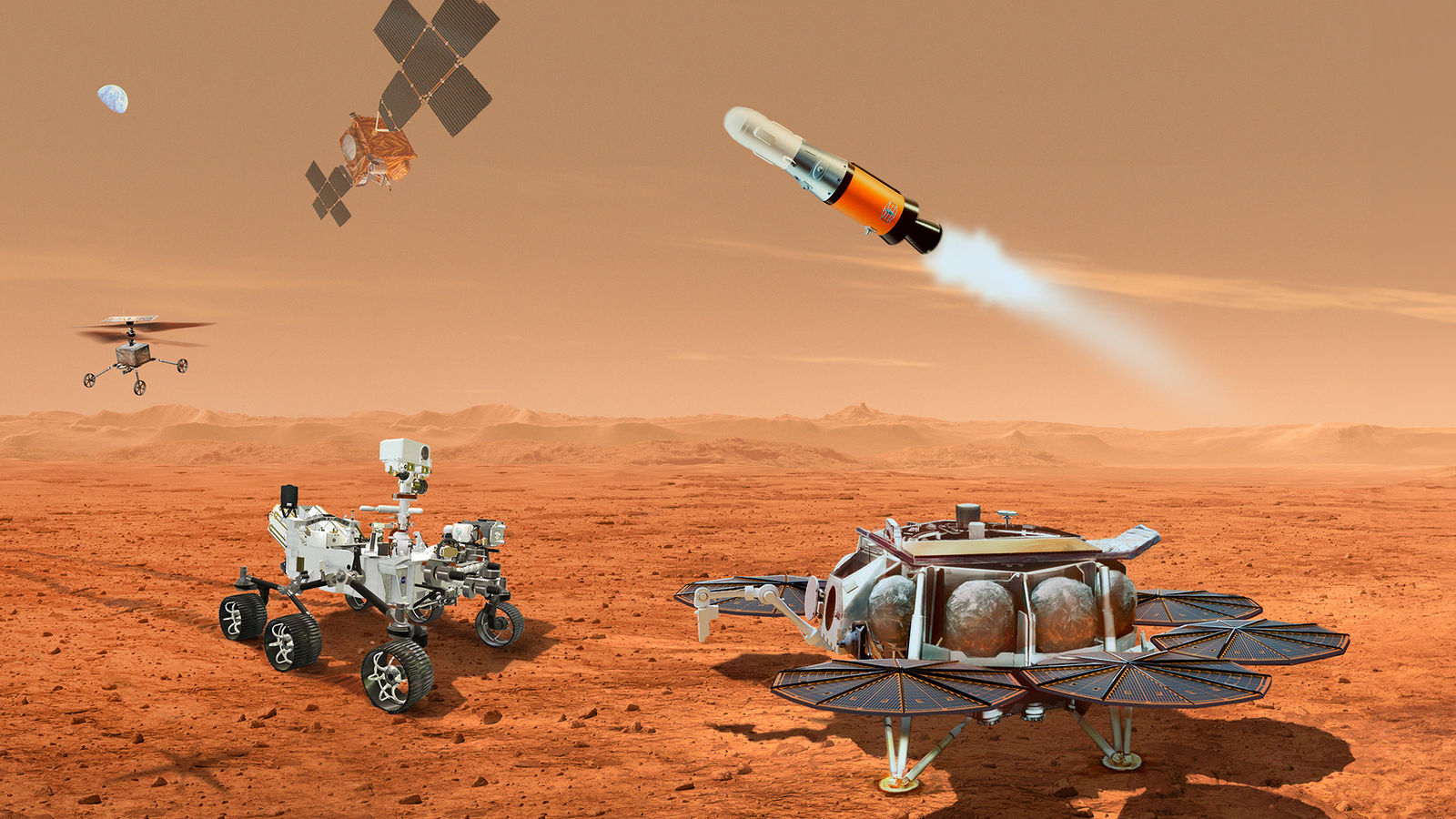Mission to Mars
Gears that go “above and beyond”
If all goes as planned, NASA will launch its Sample Retrieval Lander (SRL) Mars mission from Florida’s Space Coast in June 2028, the start of its latest, and greatest, mission to Mars. By sometime in the early 2030s, the SRL mission will have succeeded in traveling to Mars; gathering samples already collected by the Perseverance Rover; launching them into Mars orbit; and capturing and returning them safely to Earth. For NASA’s scientists, the SRL mission is the culmination of a decades-long series of Mars explorations designed to find evidence of life outside of Earth or, at the very least, provide important insights into the origin of life here on Earth.
The mission is among the most ambitious, and risky, ever devised by humankind. After a two-year journey and landing on Mars, the SRL will rendezvous with NASA’s Perseverance Rover, which landed on Mars in 2021 and is busy now exploring an ancient river delta and collecting samples that could show the potential for ancient life. These samples will either be collected by the Sample Retrieval Lander via Sample Transfer Arm or, if Perseverance can’t make the rendezvous point, retrieved by two Sample Recovery Helicopters. Sample tubes then will be loaded into an Orbiting Sample container atop the Mars Ascent Vehicle (MAV) carried by the SRL. The MAV then is launched into orbit around Mars, where it’s met by yet another vehicle: the Earth Return Orbiter (ERO). The Orbiting Sample container is transferred from MAV to ERO, which then delivers the samples to Earth.

Southern Gear puts all the resources for the machining of gear blanks, gear cutting, gear grinding, assembly and inspection under one roof—all close to the Space Coast.
Just a few hours south of where this mission will launch in 2028, on the factory floors of Miami-based Southern Gear & Machine, work is underway to help make this mission a success. Southern Gear is playing a small but important role, by helping to design, develop, and perfect the critically important gears and shafts used for the actuation of the legs and Sample Transfer Arm on the SRL. This vehicle must be both lightweight enough to get to Mars, and robust and reliable enough to withstand the rigors of space, a surface landing, successful transfer of the samples, and then launch the MAV and its precious cargo back into orbit. A lot is riding on the performance of these gears, says Southern Gear Engineering manager Sebastian Fajardo. “The project has unfolded over many months, starting in April 2023,” recalls Fajardo. “We were challenged by our customer to produce a series of high precision spur gears and internal splines, which sounds simple enough until you factor in the very thin walls required for weight savings, and the need to hold exceptionally tight tolerances to help ensure the highest levels of repeatability.”
Despite these challenges, Southern Gear’s President Karen Malin says her company was eager to take on the work and go ‘above and beyond’. “We have all the necessary resources in-house,” she says, “And the know-how derived from our long-time aerospace and defense work to find ways to make parts like these more easily manufacturable.”









